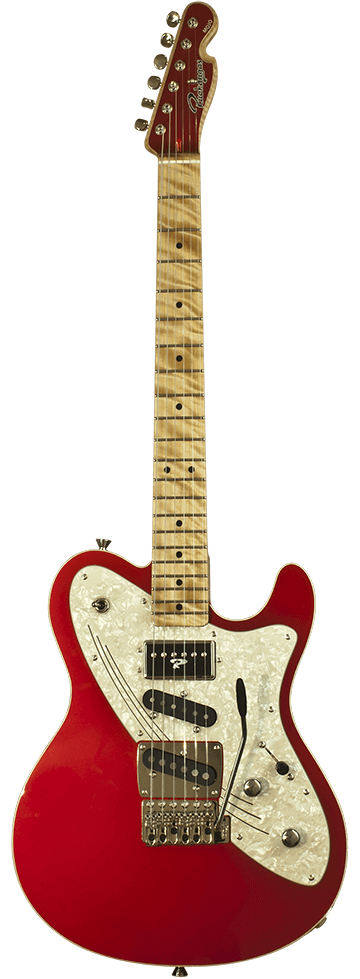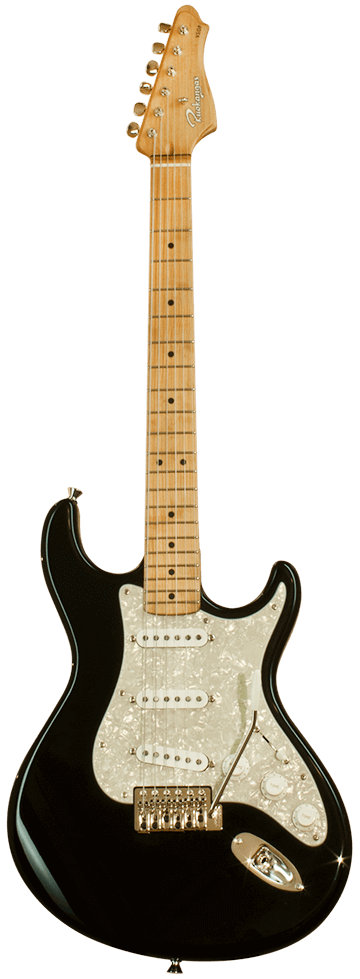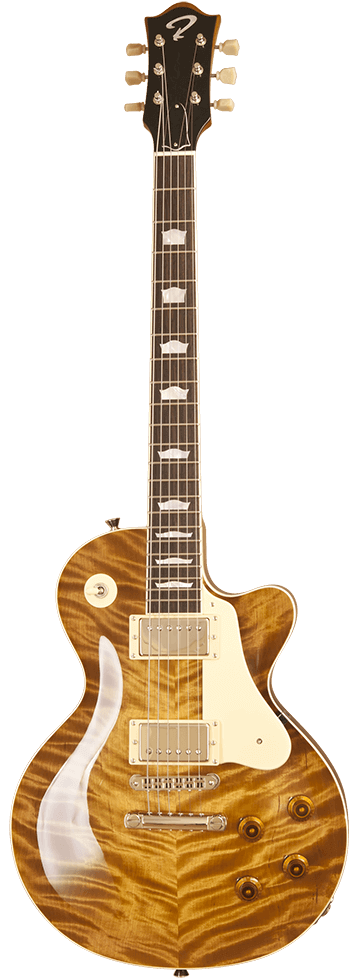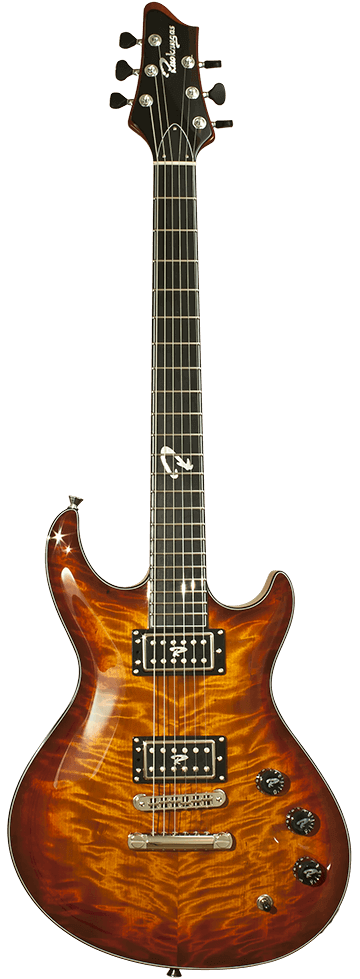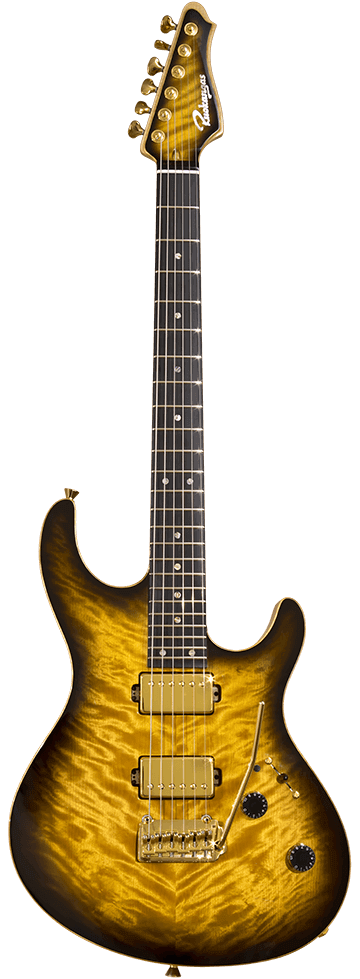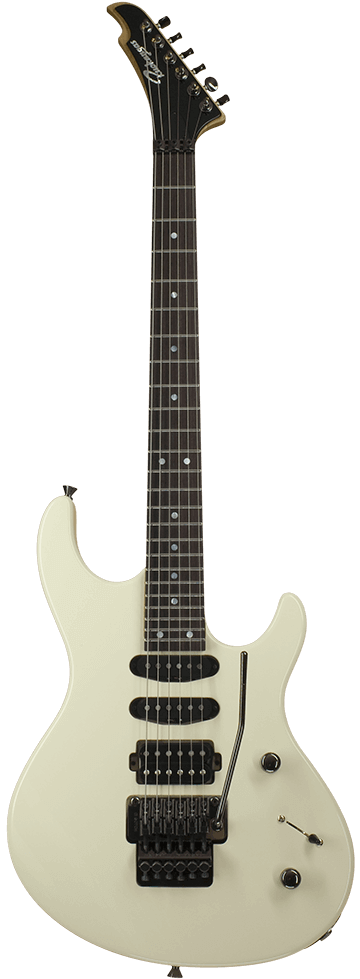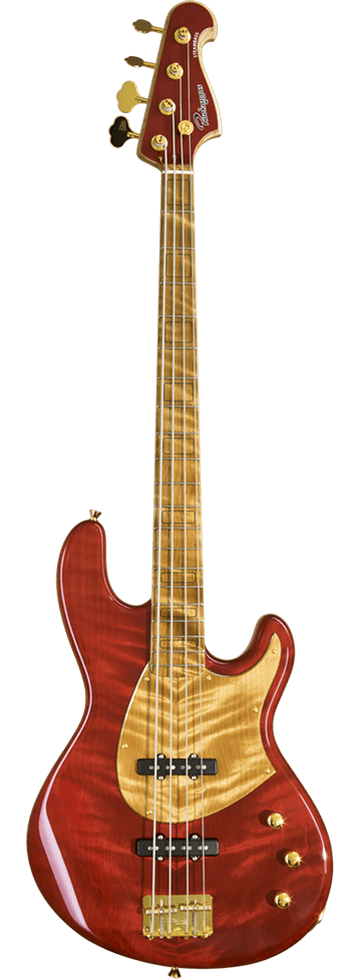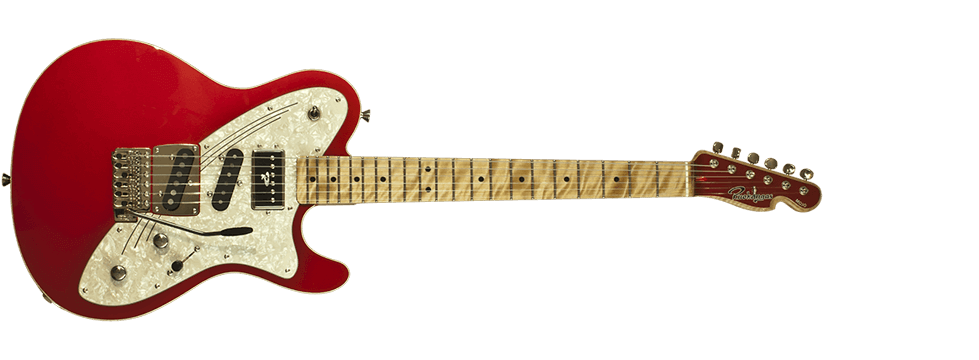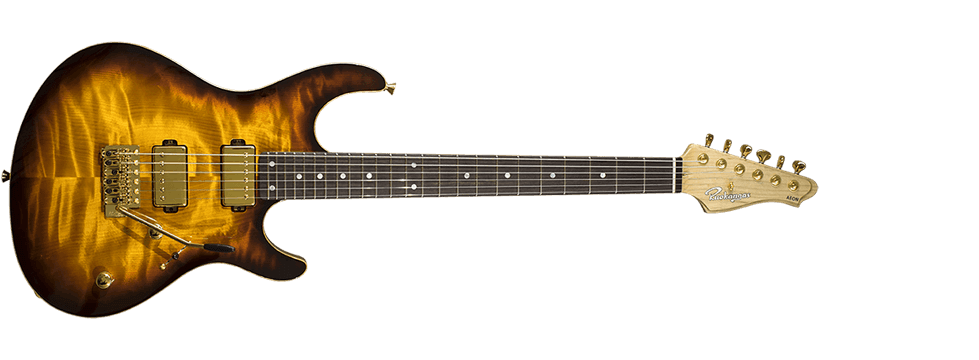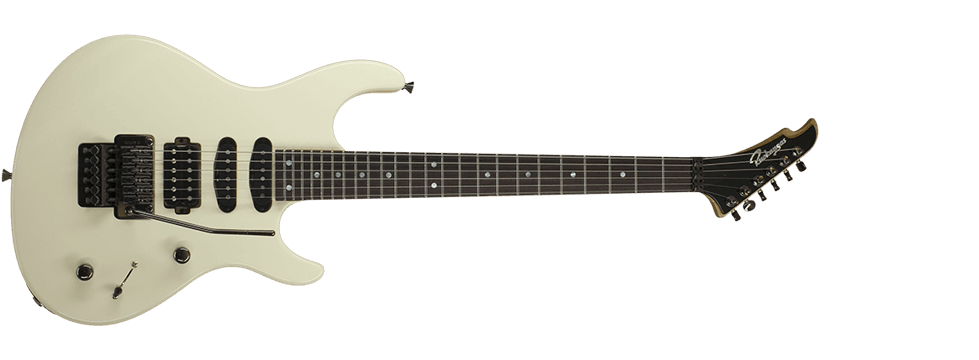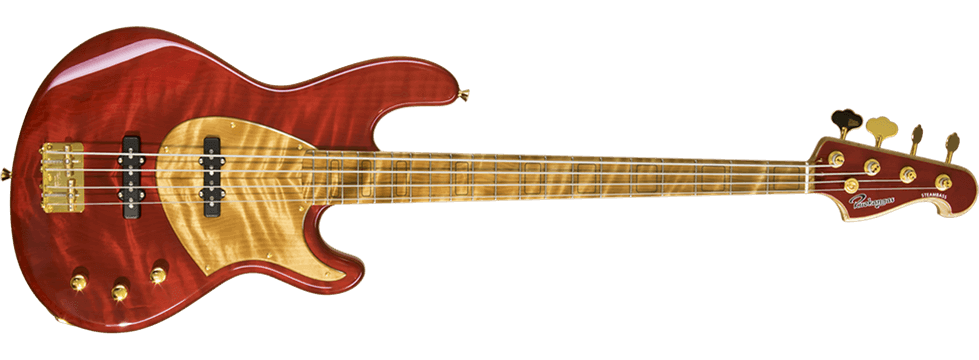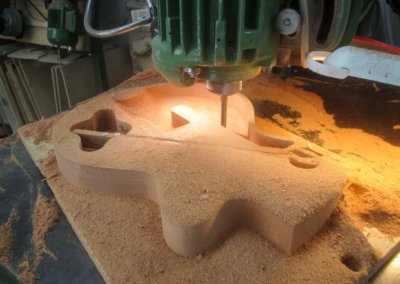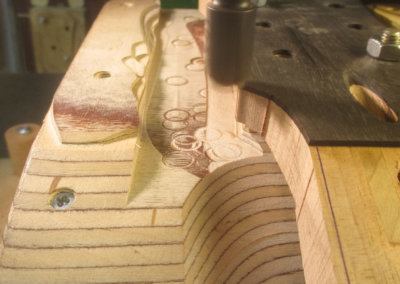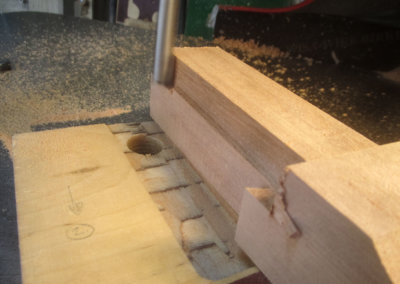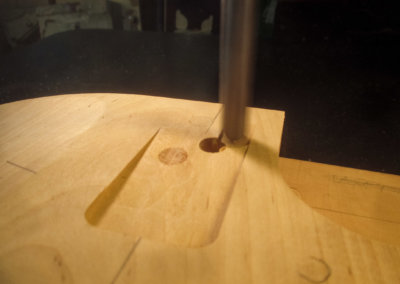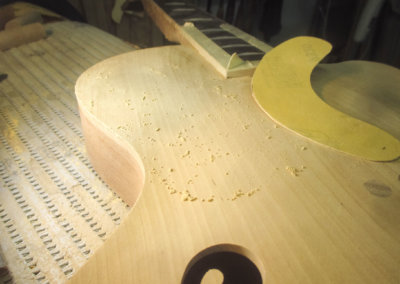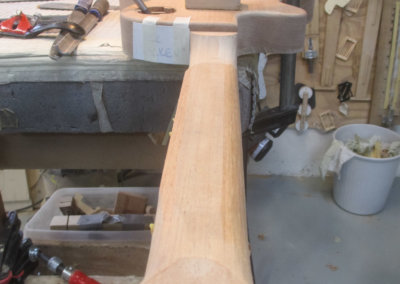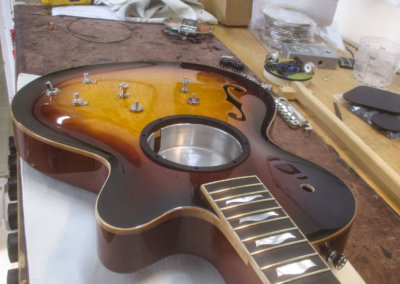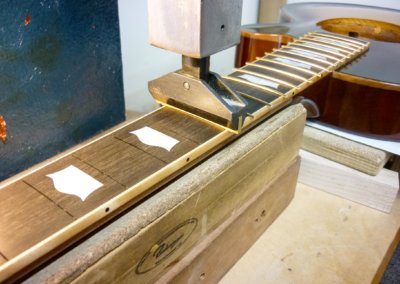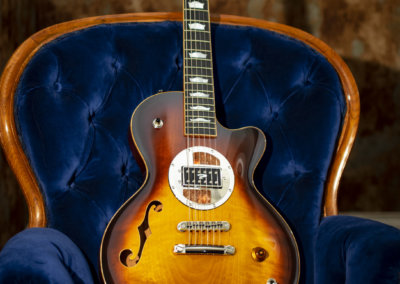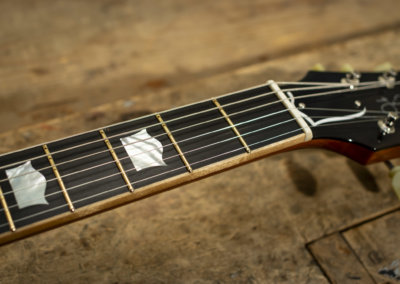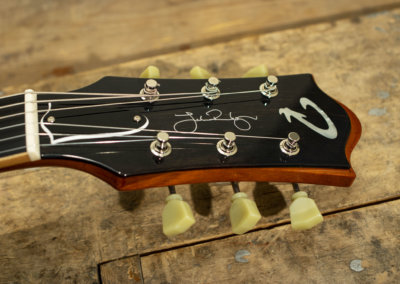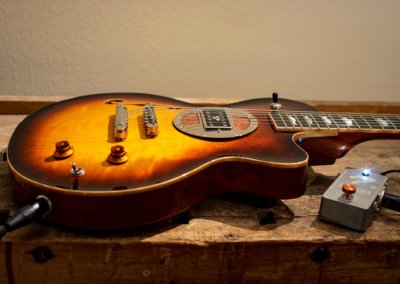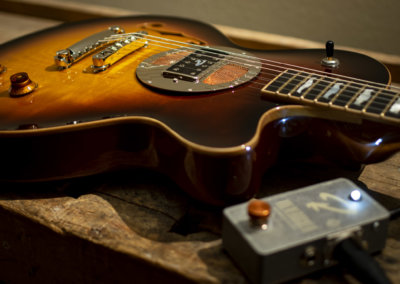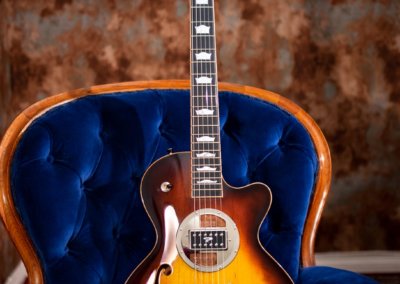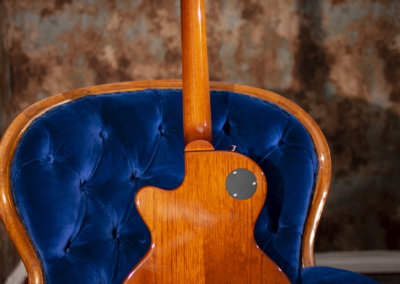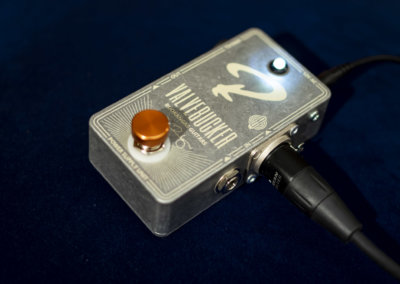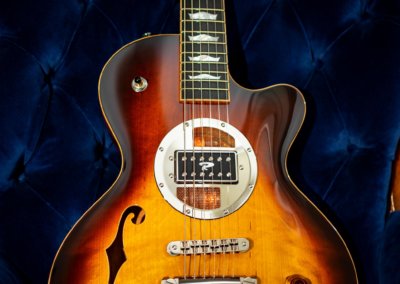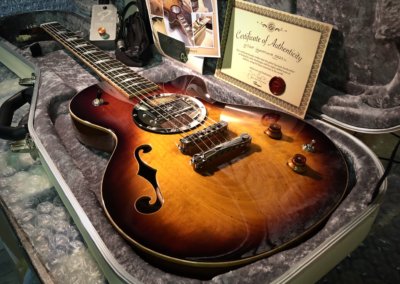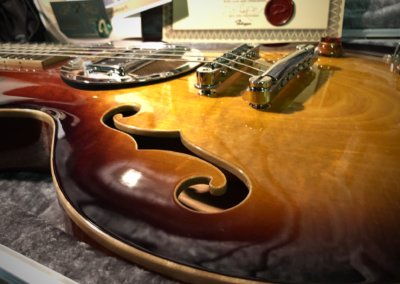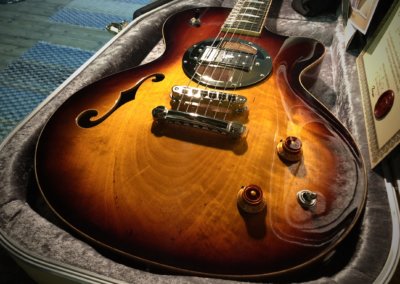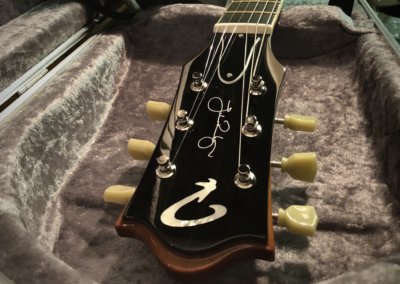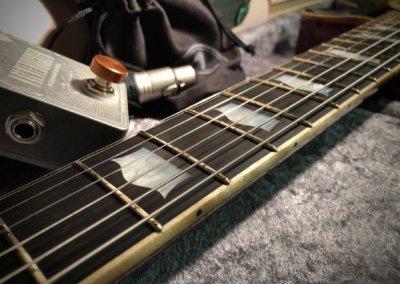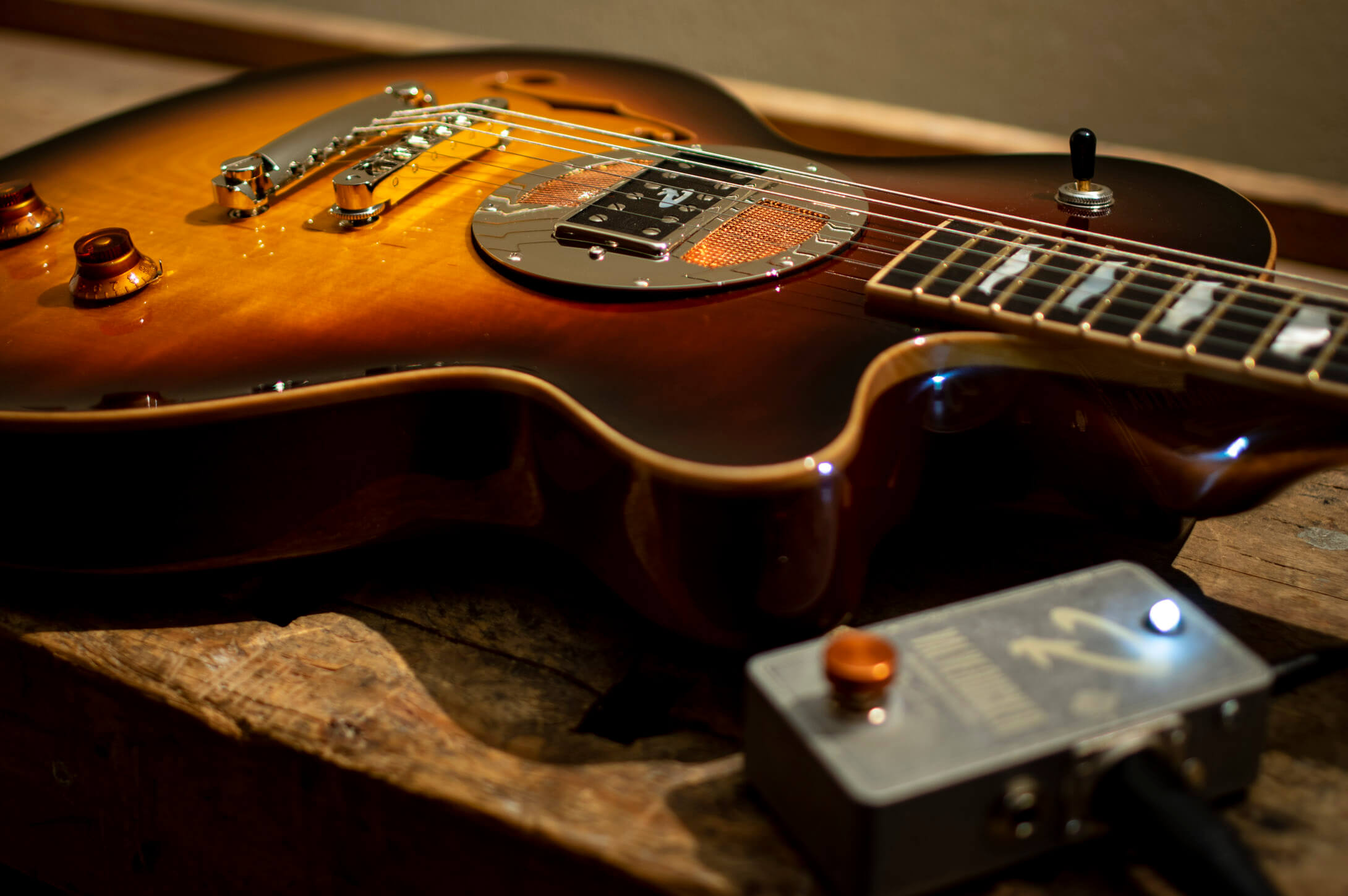
MY HEART SKIPPED A BEAT
Let me tell you the story of Alice. Still makes my heart skip a beat when thinking about it…
Take the leap
When Kingsley Durant called me up in December 2018, wanting to order a Unicorn Artisan, it was not supposed to feature a Valvebucker. It couldn’t have, cause when he ordered the guitar, the Valvebucker was not out yet. After the launch of it, in January 2019, one thing lead to another – I think David Torn might have had a role to play there too – and eventually Kingsley decided to take the leap. This was to be the very first Unicorn Artisan (or any semi hollow guitar of ours) featuring our new, peculiar invention.
Something was not right…
First, all went smooth as butter. We delivered the guitar to Kingsley in the autumn 2019. He loved it! But then… he noticed a weird, shrieking sound when playing the guitar at volume (meaning at around 100 db level). He sent me a little video showing the issue. True – something was not right. And so I requested Kingsley to send the guitar back to me.
Step outside the comfort zone
A little disclaimer is in place. Before the launch in 2019, we had worked on the Valvebucker R&D for years to make it right. It was a long and winding road largely because… well, in fact there was no road! No – we were making the road as we went. That’s what pioneering is all about. It is the most exciting facet of my work as a guitar maker – and at the same time it means taking risks, stepping outside the comfort zone and solving problems, one after another, intuitively as they appear. All that said – by the time we launched the Valvebucker, we estimated all the major challenges had been defeated, and we could roll our unique brainchild out to the big world in peace…
We must have made a mistake
So Kingsley sent the guitar back to Finland. We inspected it and found that the one of the tubes was indeed squealing uncontrollably. And… this shouldn’t happen. We were using mil-spec NOS tubes and our test routine shouldn’t have let such a tube through. Also, I was 100% certain that it wasn’t like it when it left Finland the first time, cause I had spent quite a while playing the guitar myself – at high volume! In the end, we concluded that we must have made a mistake, and now we could eradicate it and move on. We changed the tube and biased the circuit. I played the guitar at extreme volumes – had it powered up continuously for 8 hours and then played again. No issues whatsoever. This is how it was supposed to work in the first place!
It’s worse than before…
So I proceeded to send the guitar back to Kingsley. The express shipping went all smoothly – and then an email from Kingsley hit my inbox: “It’s still squealing. It’s now worse than before”.
Blood, sweat & tears
My heart skipped a beat… I was devastated. You know, for us luthiers, our guitars are kind of like our babies. It may sound like a cliché, but it’s so true… And in this particular case it was even more so. The Valvebucker was a product that we had shed sweat, blood and tears for ’til no end…
Kingsley was quite upset at this point – very understandably so, may I add. I couldn’t wrap my brain around what was happening here. I told Kingsley exactly how things were. I apologized the situation, and explained the options. We could cancel and refund… or Kingsley could join our R&D team in attempt to solve this once and for all.
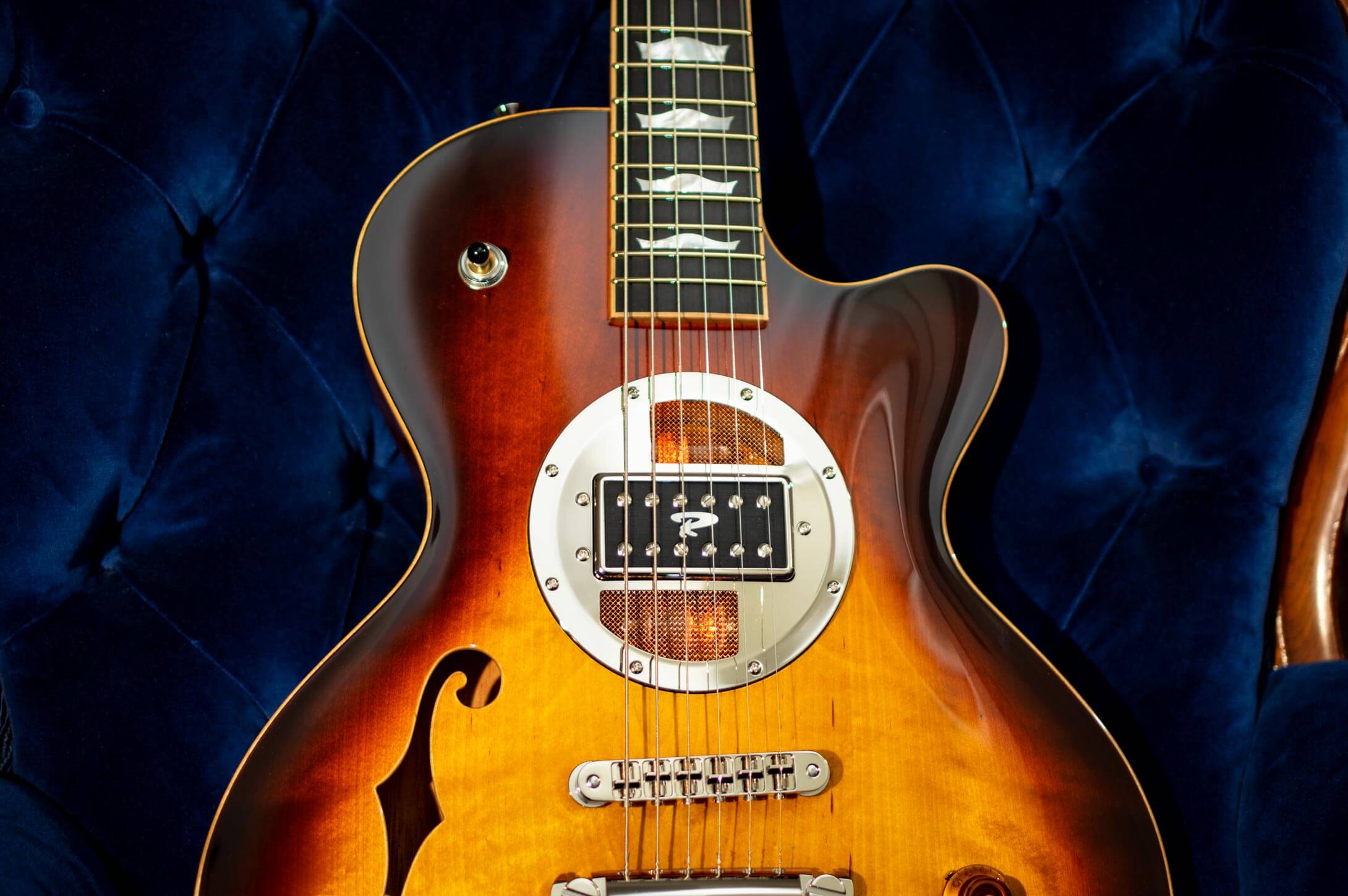
A KICK FORWARD
The work began!
Kingsley admitted that he had considered to call it quits… but in the end – to our great relief – he joined our effort. Lassi Ukkonen brought in his oscilloscope, microscope, tube tester and other lab equipment I don’t even know the names for… And the work began!
If Edison would have given up…
The following weeks were a text book example of what it is to invent something. Thomas Edison went through 6000 different materials to find the right filament for a light bulb. It took him a solid year. In comparison, our problem at hand may seem like a walk in the park – but the principle is the same. If Edison would have given up and quit at the 5900th material…
Out of the Wonderland, you!
We had done our test routines with every VB guitar. We had shipped the demo guitars to Tokyo, Los Angeles, Germany & Sweden without facing any problems. We had sent out the first few custom ordered VB guitars to the clients around the world – no issues there, either. We did it all by the book… and then came Alice (the name Kingsley and I had come up for the guitar) and kicked us out of the Wonderland… with Kingsley’s friendly assistance.
G-forces and guitars
So what was wrong with Alice? The problem revealed itself after Lassi gave me a little lecture about how G-forces work. Ok… not a completely unknown territory for me, but in the case of an onboard tube-driven pickup inside an electric guitar, I had to admit that we had apparently overlooked the impact of G-forces that can happen during shippings. This, in combination with another fact we had revealed – that not all mil-spec NOS tube makes are the same – had resulted in the unfortunate events that lead to the repeated failure of Kingsley’s guitar – which I at this point more applauded than felt sorry for, as it gave us the opportunity to detect a vulnerability in the design and fix it.
They failed, systematically…
Our first big find was that some of the NOS tubes (we have thousands of them…) we had acquired seemed not to have aged mechanically that well even if the measured values are spot on, they’re mil-spec and unused, in their original boxes. Our inspection revealed that there was some kind of plating chipping off inside some of the tubes. Some the NOS pentodes by certain manufacturers failed systematically our stress tests, while others survived in perfect condition. But this was only half a solution.
Anti-vibration to the max
We also took a critical look into the way the VB circuit board is mounted to the round chassis under the pickup ‘lens’. In the first guitars we did it with soft pads, that is already more than many tube amps have these days, but still… it wasn’t really a proper anti-vibration mount. I contacted a specialist in England… They asked details about our product – the weight of the sensitive parts, how it ships, what the product is used for, and so on…The outcome? We developed a sophisticated double anti-vibration mount built right into the VB chassis. First, the circuit board is anti-shock isolated from the chassis. Second, the tube sockets (and tubes) are anti-shock isolated from the circuit board. This should theoretically reduce the impact of potential G-forces during shipping (or a wild live performance, ha!) to 10 % (meaning, 90% less!) from before. In addition, our new anti-vibration mount isolates the tubes acoustically from the strongly vibrating instrument itself.
Alice gave us a good kick
What did we learn? Many things. Every crisis situation is simultaneously an opportunity to learn something new. A chance to improve. Climb to the next level. Thanks to Kingsley’s unparalleled patience and goodwill, we were able to make the Valvebucker a better product than it was before. In other words – Alice gave us a good kick – and we allowed that kick lead us forward.
In the next chapter, I’ll shut up (finally). Let’s instead read about Kingsley’s experience with Alice.

THE OTHER SIDE OF THE LOOKING GLASS
I couldn’t get my usual sounds
When I first picked my new guitar up and plugged it in, I have to admit my experience was one of disorientation. I couldn’t get any of my usual sounds and didn’t know what to do with the sounds the guitar was giving me. After about an hour of exploration that didn’t lead anywhere I took a break and did something else.
When I returned it was as if I’d passed through the looking glass. At that point I started actually hearing (and feeling) the guitar/pickup. Playing music instead of just making guitar-like noises. At that point I started noticing things it did better (or differently) than any other guitar I own or have played (and, for those who don’t already know, I own a lot of guitars).
Trapped in a vat of molasses
Eventually, of course, I stopped and plugged in a different guitar – another Ruokangas Unicorn, my trusty Bad Absinthe “Babs.” Same basic chassis as my new one, so it shouldn’t have required much adjustment. But it felt like I was trapped in a vat of molasses The response is so slow! Where did all that dynamic range go, and why does it sound so wimpy when I hit the strings hard? I had landed on the other side of the looking glass, where everything I usually take for granted now felt not quite right.
Different from any electric guitar
It’s hard to overstate the extent to which the experience of playing this guitar with this pickup is different from any electric guitar I’ve played over my fifty-plus years of playing.
We all know that, after some amount of time put in playing electric guitars, one tends to develop a set of expectations (preconceptions?!) about how a guitar should behave. A lot of that is visual: my new guitar was specifically designed to reference certain vintage models from Gibson, which of course creates an expectation that it should sound like a vintage Gibson.
Over more time one might develop fairly strong functional preferences as well, i.e., for certain types of pickups, wiring schemes, or whatever.
This guitar violates my preferences
This new guitar violates at least one fairly hardened preference of mine, which is to have a wider-than-usual palette in terms of pickup combinations and blending via the volume controls. Moreover, it doesn’t do any of my personal standby electric guitar sounds. Vintage Les Paul humbucker sounds? Not really. Warm neck-pickup jazz tone? Nope. Fender quack and twang? Ummm… …still no.
Although I had read some descriptions that describe the three settings in familiar terms – “neck pickup,” “bridge pickup,” and “acoustic-like sound,” I have to say that, to my ears, those descriptions aren’t even close to being accurate. The pickup’s location should be a clue: it’s about where the middle pickup would be on a three-pickup guitar, or even where the single pickup is on one of the old ES-330s with the neck set farther into the body. The basic character of the pickup in all three settings reflects its location. One of my first thoughts was, Jerry Garcia would love this guitar!

Once I let go…
Once I let go of the effort to find familiar voices I started to notice how each of the three sonic options from the Valvebucker pickup has its own compelling, dynamic, and expressive sound. Exploring these sounds I found myself starting to appreciate the simplicity of NOT always having to be twisting knobs and flipping switches. That said, the volume and tone controls work in a very different but predictable and useful-throughout-the-whole-range kind of way.
I could hear everything
Eventually I came to realize that these unfamiliar sounds might actually provide a whole new perspective on familiar guitar parts. At one point while in the switch-up (“acoustic”) setting I launched into “Sultans of Swing.” I’d argue that the sound was every bit as compelling as Mark Knopfler’s iconic tone from that track. I could hear everything my fingers were doing, in high definition. The signature double-stops from the chorus had a lovely bite and the bent notes on the leads just sang.
Mark Knopfler, if you’re reading this…
Inspired by that I flipped the switch to the down position, turned on an overdrive pedal, and played the money lick from “Money for Nothing.” Again I could only smile at how good, and how expressive, the resulting sound was. Mark Knopfler, if you’re reading this, you should talk to my friend Juha…
Game-changing…
At a fundamental level this guitar gives me the same thing that I get from my Ken Parker archtop, a similarly game-changing acoustic guitar: vastly increased dynamic and expressive range. I can play incredibly softly, as in barely brushing the strings, and still get a usable response. I can hit with my picking hand as hard as I can and it doesn’t squish or compress. The pickup translates the nuances of response resulting from picking in different locations on the string beautifully. It’s disconcerting, actually, until one gets used to that behavior and realizes all the new options that are on the table.
The notes hang on longer
Another thing, which I didn’t necessarily expect or see coming, is that notes hang on for noticeably longer. I can shape notes with my fingers over time without needing so much help from the amplifier or pedals. As someone who primarily plays with a clean(ish) sound, this is a big deal. An unanticipated consequence, though, is an increased awareness that I really need to work on my bending and vibrato!
There is one thing the new guitar needs
As my first week with the guitar has passed it’s become increasingly clear that this guitar is doing things which (a) I really, really like and find useful for what I want to do on electric guitar, and (b) make me (painfully) aware of the limitations of basically all of my other electric guitars. I’m sure there will be times where I just want that sweet neck-position “jazz” tone, or a Bigsby vibrato, in which case I will pick up a different guitar. I have to say, though, that every time I do that right now I end up putting it down rather quickly because I find myself missing the hyper-expressive nature of the new one.
There is one thing the new guitar needs: to absorb my sweat. A lot of my sweat. One of the wisest things my friend Steve Kimock ever posted on a guitar forum we both frequent is this: A guitar is only as good as the time you put into it. I’m very much looking forward to putting time, a lot of time, into this one.
Kingsley Durant 13-Oct-19

